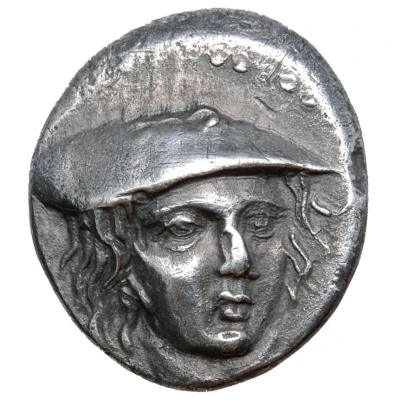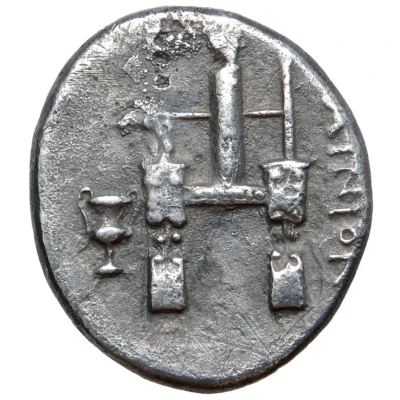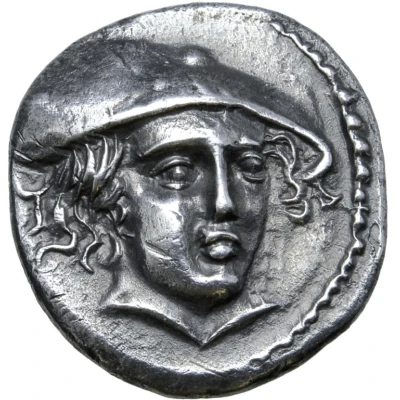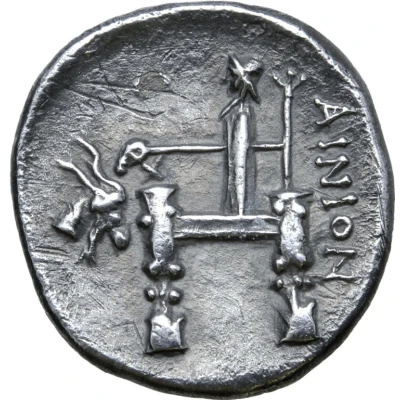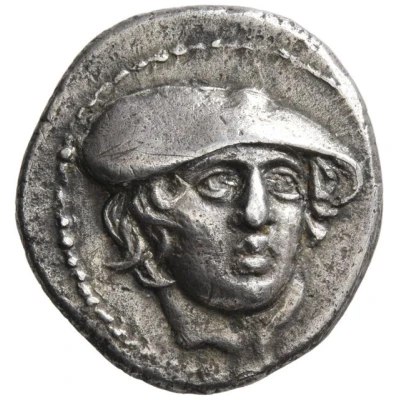
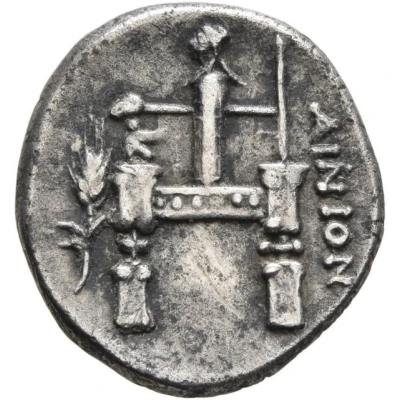

Drachm 357 BC - 341 BC
| Silver | 3.49 g | 17 mm |
| Issuer | Ainos (Thrace) |
|---|---|
| Type | Standard circulation coin |
| Years | 357 BC - 341 BC |
| Value | Drachm (1) |
| Currency | Drachm |
| Composition | Silver |
| Weight | 3.49 g |
| Diameter | 17 mm |
| Shape | Round (irregular) |
| Technique | Hammered |
| Demonetized | Yes |
| Updated | 2024-10-10 |
| Numista | N#384930 |
|---|---|
| Rarity index | 100% |
Reverse
Archaic cult image of Hermes standing to left on throne, the left arm of which is supported by a tiny sphinx; to left, grain ear.
Script: Greek
Lettering: AINION
Comment
The reverse of this issue shows a xoanon of Hermes, an Archaic wooden sculpture, whose discovery is reported by Kallimachos in his Iambus 7. A product of Epeios, the sculptor of the Trojan horse, the xoanon was carried down into the sea by the Skamander river and found by fishermen from Ainos, who tried to hack the god up and use him as firewood. However, the god would neither break nor burn, and when they threw him back into the sea, he reappeared in their fishing nets again. Eventually, they recognized him as a god and brought the xoanon to Ainos, where, on the order of Apollo, it was set up in the sanctuary shown on the reverse of this coin. Stories like these, where fishermen catch divine objects in the sea, are a familiar topos in Greek mythology and reminiscent of the xoanon of Dionysos from Mytilene.
Interesting fact
The Drachm coin from Ainos (Thrace) was used as a form of currency in ancient Greece and its design was inspired by the Greek goddess Athena. The obverse side of the coin features an image of Athena's head, while the reverse side features an owl, which was a symbol of wisdom and associated with Athena. The use of Athena's image on the coin was a way to show the city's connection to Greek culture and its deities.
Price
| Date | Mintage | VG | F | VF | XF | AU | UNC |
|---|---|---|---|---|---|---|---|
| ND (357 BC - 341 BC) | - | - | - | - | - | - |
Values in the table are based on evaluations by sales realized on Internet platforms. They serve as an indication only for Drachm (357 BC - 341 BC) coin.
